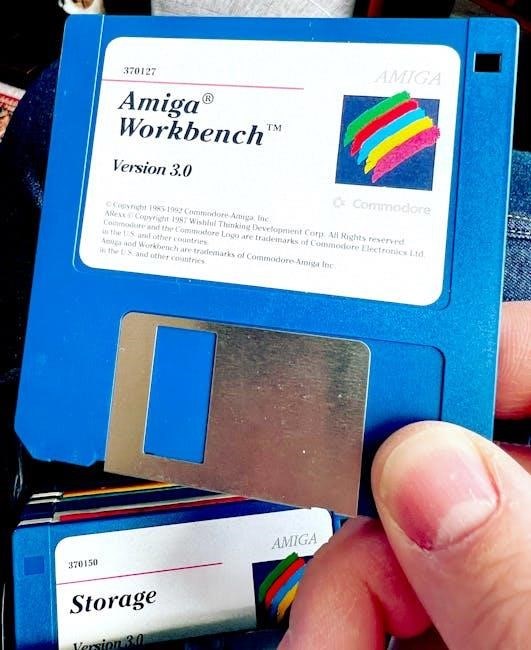The House-Tree-Person (HTP) test is a projective psychological assessment created by John Buck in 1948. It evaluates personality‚ emotional functioning‚ and cognitive processes through drawings of a house‚ tree‚ and person‚ providing insights into the subconscious mind and interpersonal dynamics.
1.1 Overview of the HTP Test and Its Purpose
The House-Tree-Person (HTP) test is a projective psychological tool designed to explore an individual’s personality‚ emotional functioning‚ and cognitive processes. Participants are asked to draw a house‚ a tree‚ and a person‚ which symbolize different aspects of their psyche. The house often represents home life and security‚ the tree signifies inner self and emotional growth‚ and the person reflects self-perception and interpersonal relationships. The test is widely used in clinical settings to gain insights into subconscious thoughts and feelings‚ aiding clinicians in understanding an individual’s emotional landscape and behavioral patterns.

History and Development of the HTP Test
The House-Tree-Person test was created by John Buck in 1948‚ evolving from earlier projective techniques. Its scoring manual was later developed by Buck‚ Jolles‚ and others.
2.1 The Creator: John Buck and the Origins of the Test
John Buck‚ an American psychologist‚ developed the House-Tree-Person (HTP) test in 1948. Drawing inspiration from earlier projective techniques‚ Buck designed the test to assess personality traits‚ emotional functioning‚ and cognitive processes. The test involves drawing a house‚ tree‚ and person‚ with each symbolizing different psychological aspects. Buck’s work laid the foundation for subsequent research and scoring systems‚ making the HTP test a valuable tool in clinical and research settings. His contributions remain central to the test’s interpretation and application.

The HTP Scoring Manual
The HTP Scoring Manual provides standardized guidelines for interpreting house‚ tree‚ and person drawings. Developed by John Buck‚ Joles‚ and others‚ it offers a framework for assessing emotional and cognitive traits through symbolic elements in the drawings‚ ensuring consistent evaluation across administrations.
3.1 Understanding the Scoring System
The HTP scoring system‚ developed by John Buck‚ Joles‚ and Burns‚ provides a structured approach to interpreting drawings. It evaluates elements like proportions‚ details‚ and symbolism in the house‚ tree‚ and person. Each component is scored based on predefined criteria‚ such as the house’s stability‚ the tree’s growth‚ and the person’s features. The system assesses emotional‚ cognitive‚ and interpersonal traits‚ offering insights into the individual’s psychological state. Proper training is essential for accurate and consistent scoring‚ ensuring reliable results in clinical and research settings.
3.2 Key Elements in Scoring: House‚ Tree‚ and Person
The HTP scoring manual emphasizes analyzing the house‚ tree‚ and person drawings for specific traits. The house’s structure‚ windows‚ and door symbolize family dynamics and emotional security. The tree’s trunk‚ branches‚ and leaves reflect emotional stability and life experiences. The person’s facial features‚ posture‚ and details reveal self-perception and interpersonal skills. Each element is scored based on its completeness‚ proportions‚ and symbolic meaning‚ providing a comprehensive psychological profile. These elements together offer insights into the individual’s emotional‚ cognitive‚ and social functioning‚ guided by established scoring criteria.
3.3 Interpretation Guidelines and Symbols
The HTP test’s interpretation focuses on uncovering symbolic meanings in the drawings. The house often represents family dynamics and emotional security‚ while the tree symbolizes emotional stability and life experiences. The person drawing reflects self-perception and interpersonal relationships. Specific symbols‚ such as a barren tree or a house with no windows‚ may indicate emotional trauma or isolation. Guidelines emphasize considering the context and individual background to avoid misinterpretation. Examiners analyze details like proportions‚ omissions‚ and distortions to gain insights into the individual’s subconscious thoughts and emotional landscape‚ ensuring a nuanced understanding of their psychological state.
The Role of the Three Houses Tool
The Three Houses tool integrates into the HTP framework‚ aiding in information gathering by giving voice to children‚ adults‚ and families‚ enhancing clinical and research applications.
4.1 Integration of the Three Houses Framework
The Three Houses framework within the HTP test serves as a dynamic tool for gathering insights from individuals‚ including children and families. It allows participants to express their thoughts‚ feelings‚ and perceptions through structured yet flexible drawing and questioning techniques. This approach enhances the depth of assessment by providing a platform for voices that might otherwise be overlooked. The integration of this framework into clinical and research settings has proven invaluable for understanding complex emotional and cognitive dynamics in a non-invasive manner.

4.2 Applications in Clinical and Research Settings
The House-Tree-Person test is widely used in clinical and research settings to assess personality‚ emotional functioning‚ and cognitive processes. Clinicians employ it to gain insights into an individual’s subconscious mind and interpersonal dynamics. In research‚ the test aids in studying psychological aspects‚ such as trauma indicators and emotional landscapes. Its versatility makes it a valuable tool for both diagnostic purposes and therapeutic interventions‚ providing a non-invasive method to understand complex emotional and cognitive dynamics in diverse populations‚ from children to adults.

Clinical Applications of the HTP Test
The HTP test assesses personality‚ emotional‚ and cognitive aspects through projective drawings. It aids clinicians in understanding subconscious dynamics and is applied across various age groups effectively.
5.1 Personality Assessment Through Drawings

The HTP test evaluates personality traits by analyzing drawings of a house‚ tree‚ and person. Each element symbolizes different psychological aspects‚ such as emotional functioning and cognitive processes. The house reflects home life and family dynamics‚ while the tree represents personal growth and emotional stability. The person drawing reveals self-perception and interpersonal relationships. Clinicians interpret these visuals alongside responses to questions‚ providing insights into subconscious thoughts and emotional landscapes. This method is widely used in clinical settings to assess personality integration and emotional well-being across various age groups.
5.2 Emotional Functioning and Cognitive Processes
The HTP test provides a window into emotional functioning by analyzing how individuals perceive their environment and themselves. The drawings reveal subconscious emotions‚ with the tree often symbolizing personal growth and emotional stability. The house reflects feelings about home life‚ while the person drawing exposes self-perception and interpersonal skills. Clinicians use these elements to assess emotional well-being‚ cognitive processes‚ and coping mechanisms. This method helps identify underlying emotional challenges and thought patterns‚ offering insights into an individual’s inner world and emotional landscape. It is a valuable tool for understanding complex psychological dynamics.

Limitations and Criticisms of the HTP Test
The HTP test faces criticism for its subjective scoring system‚ examiner bias‚ and lack of standardized norms. Its reliance on interpreters’ consistency can lead to variability in results.
6.1 Subjectivity in Scoring and Examiner Bias
The HTP test’s scoring system is criticized for its subjectivity‚ as interpretations depend heavily on the examiner’s personal judgments and theoretical orientation. Examiner bias can influence how drawings are analyzed‚ leading to inconsistent results. The lack of standardized norms and clear scoring criteria exacerbates these issues‚ making it difficult to ensure reliability across different administrators. While the test provides valuable qualitative insights‚ its reliance on subjective interpretation limits its scientific validity and objectivity in clinical and research settings.
Practical Implementation of the HTP Test
The HTP test requires paper‚ crayons‚ and 40 minutes. Participants draw a house‚ tree‚ and person. Administrators ask questions to clarify meanings‚ ensuring accurate interpretations.

7.1 Administration Guidelines and Materials Needed
The HTP test requires basic materials: large‚ blank paper and a set of crayons. Ensure a quiet‚ comfortable environment. Provide clear instructions: “Draw a house‚ a tree‚ and a person.” Encourage creativity. Allow 30-40 minutes for completion. Afterward‚ ask open-ended questions to clarify meanings.Probe for details about each drawing to gather deeper insights. Maintain neutrality to avoid influencing responses. Ensure participants feel at ease to express their thoughts freely. Document all responses for accurate scoring and interpretation. This process aids in understanding the individual’s emotional and cognitive state effectively.

Case Studies and Real-World Examples
Case studies demonstrate how the HTP test reveals emotional trauma and cognitive processes. For instance‚ tree height may indicate trauma age‚ aiding in therapeutic insights and practical assessments.
8.1 Insights from HTP Test Interpretations
The HTP test provides profound insights into an individual’s subconscious mind‚ revealing emotional functioning‚ cognitive processes‚ and self-perception. Drawings often symbolize inner conflicts‚ past traumas‚ and interpersonal dynamics. For example‚ a tree’s height may indicate the age of a traumatic event‚ while a house’s structure can reflect family dynamics. These interpretations aid clinicians in understanding emotional landscapes and developing targeted therapies; Case studies highlight how the test helps uncover hidden emotions and behaviors‚ making it a valuable tool in both therapeutic and research settings. The Three Houses tool further enhances these insights by integrating diverse perspectives.























































